A filled map displays data in hues with different saturation levels to show distribution of data across areas. This topic describes how to add data to a colored map and configure a style.
A data dashboard is created. For more information, see create a Visualization Screen task.
TensorBoard

Create a chart
On the chart in the Widget Library section, find the colored map and drag it to the canvas.

Click Select Dataset and follow the instructions in the following figure to add data. The updated chart is as follows.

You can also perform the following operations on the data:

Configure multiple field formats. For more information, see Configure multiple field formats.
Configure field filtering. For more information, see Filter data.
Configure automatic data refresh (③). For more information, see Scheduled data refresh.
Switch a dataset. For more information, see Switch a dataset.
Edit a dataset. For more information, see Edit a dataset.
To process data, you can create a calculated field and a grouping dimension. For more information, see Create a calculated field and Create a grouping dimension.
Copy fields. For more information, see Copy and convert fields.
Configure the chart style
Geographic Region
You can configure the components in the configuration section as follows:
In the Display Range section, you can select Auto or Custom. The Custom Range section changes based on the selected fields.
You can also set the Manual parameter. When enabled, the current center point and zoom value are automatically generated, and you can manually modify the adjustment.
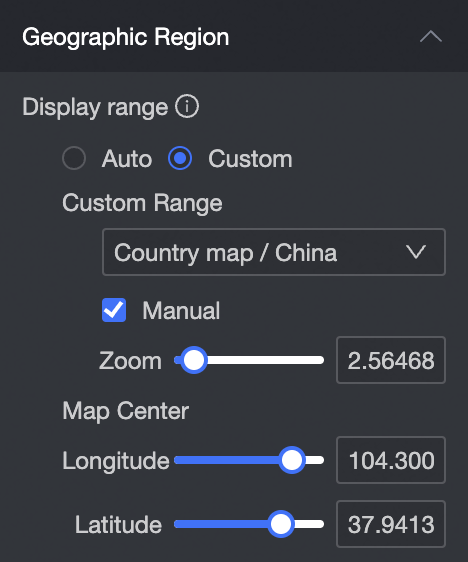
In the Outline and Fill section, you can configure the background color of the block and the color of the contour line.

In the Basemap section, you can display basemaps in multiple styles.
You can select whether to enable the Outline Streamer feature. After you enable the feature, you can set the Color (Solid Color /Gradient), Threshold, Speed, and Length parameters.
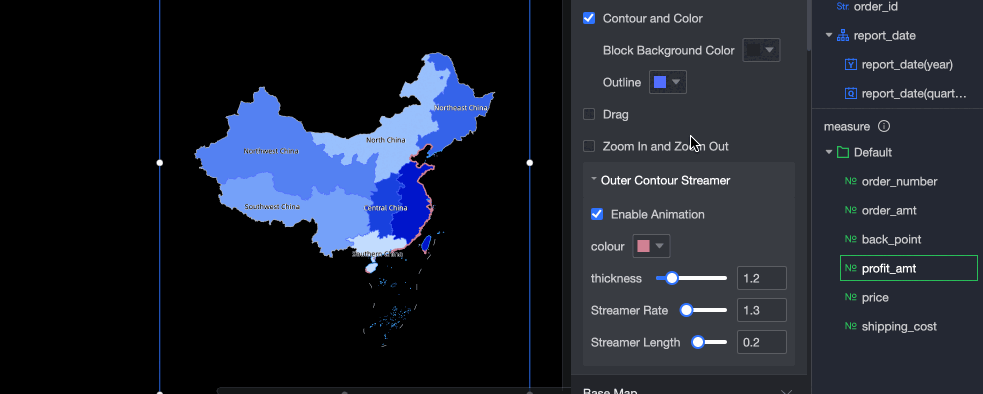
Block Color
You can configure the components in the configuration section as follows:
In the Color Scale Configuration section, you can set the Theme parameter and adjust the Transparency parameter.
You can select Continuous Interval, Equal Interval, or Custom Interval for Data Mapping Interval.
In the Custom Interval section, you can set Interval to Absolute Value or Percentage.
In the Maximum Color Settings section, you can set the Maximum, Minimum, Top 3, and Top 3 colors.
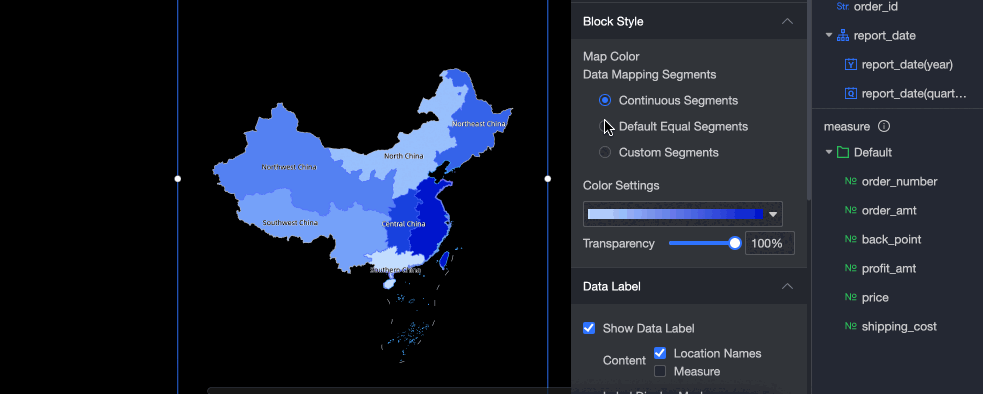
label
You can configure the components in the configuration section as follows:
Display label:
You can use the Area Name mode to create a map. The Area Name and Measure modes can be displayed at the same time.
You can use the latitude and longitude mode to create a map. You can display both the latitude and longitude and metric. If you specify Location Label /Dimension, you can also specify Location Label.
Label Display Format: Smart Display and Full Display are supported. Smart Display is suitable for scenarios where a large number of geographical names are used.
Text Style: Set the text style for label Area Name, Latitude, and Measure.
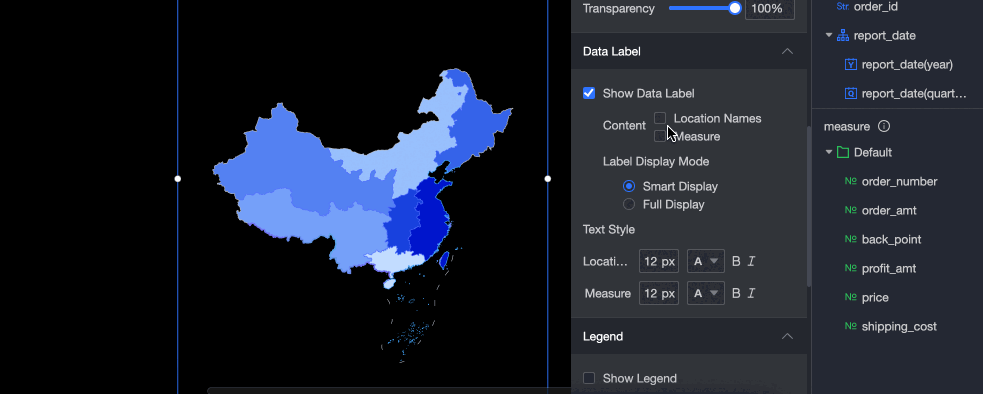
UI page
In the Legend section, you can click Show Legend and set the position, background color, and character style of the legend.
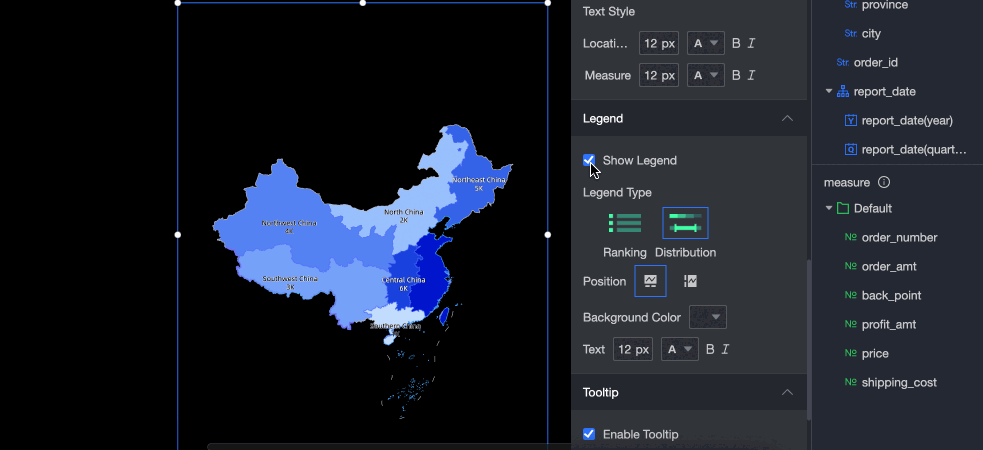
Tooltip
In the tooltip, you can configure Open ToolTip and carousel.
By default, tooltips are turned on when you configure a block.

You can turn on Automatic carousel. After you turn on Tooltips, you can set the Duration and Interval settings.
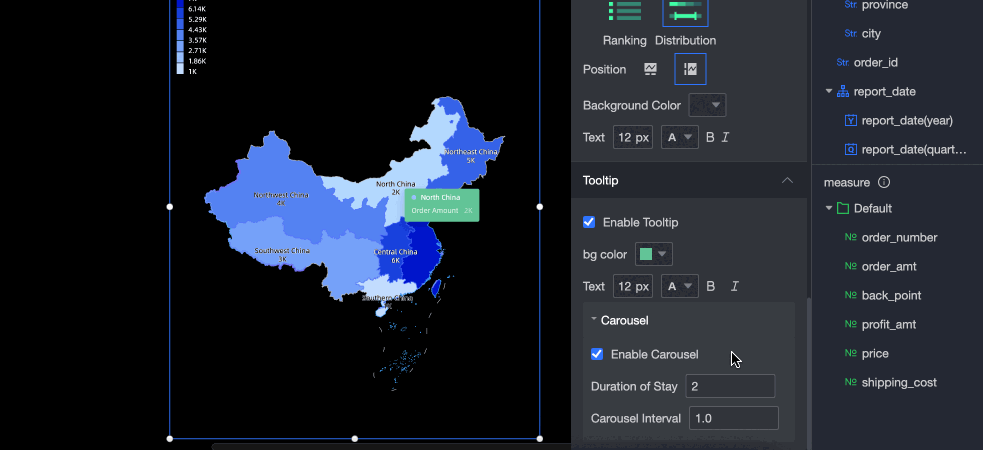
Chart event configuration
Parameter | Name | Configuration diagram | Description |
Data events | Drill |  | If you want to analyze a dimension at different levels, you can configure a drill-in for a dimension field. After you click the drill-in for a dimension field, the level changes. This changes the granularity of analysis. For more information, see Drillthrough settings. |
Linkage | If the data to be analyzed exists in different charts, you can use chart linkage to associate multiple charts for data analysis. For more information, see Linkage settings. | ||
Hyperlink | If the data to be analyzed exists in multiple dashboards or dashboards, you can jump to and associate multiple reports for data analysis. You can set the Hyperlink parameter to Parameter or External Link. For more information, see Redirection settings. | ||
Layer events | Enable link redirection | 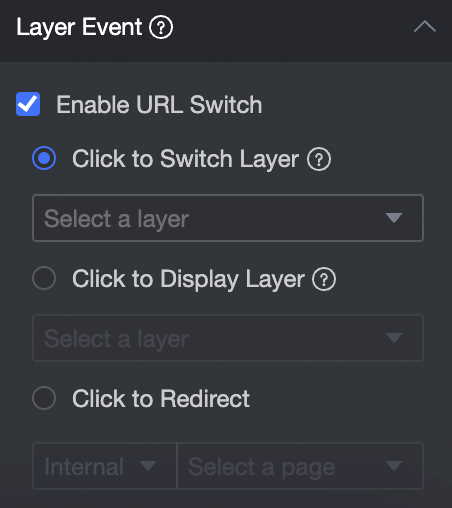 | In a layer event, you can select Open Link, click to pop up a layer, or click to jump to a page. For more information, see Configure a click event. |